Painting is an art form that has been practiced in Korea for centuries and there are still many skilled Korean painters today. The paintings have had a significant impact on Korean art history and culture and they continue to be appreciated by art lovers.
This article dives into the mesmerizing world of contemporary Korean art as we explore 20 of the most influential and renowned Korean painters throughout history. From traditional landscapes to contemporary video art, these artists have left a profound impact on both the cultural heritage of South Korea and the broader global artistic community.
Let’s take a look at some of the most famous Korean artists:
1. Park Seo-bo
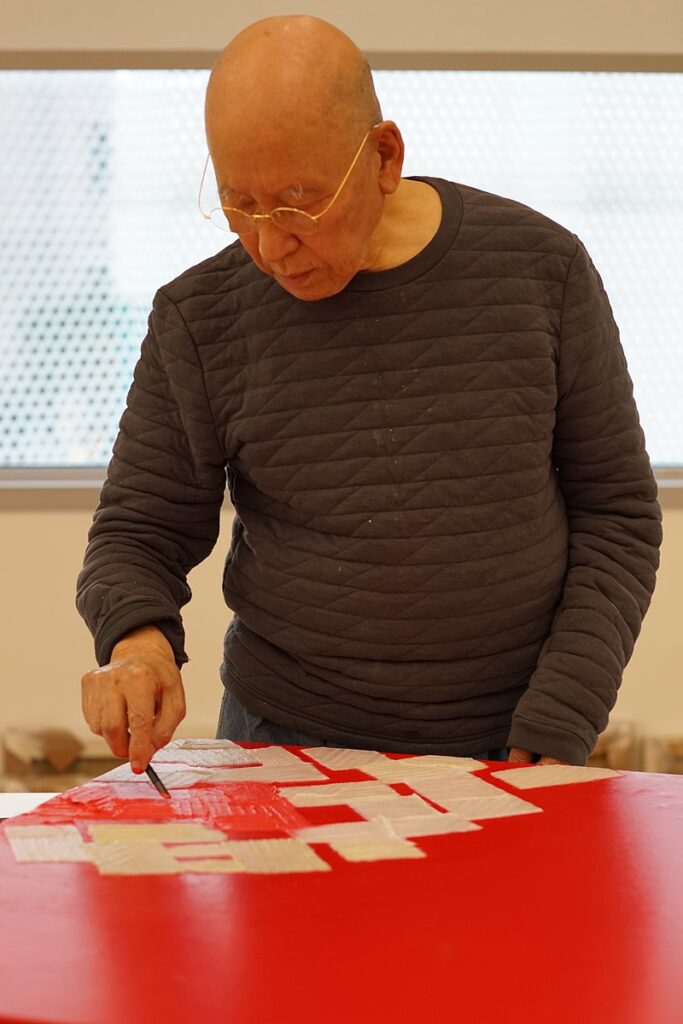
Park Seo-bo is among the top ranked prominent contemporary Korean artists. He is known for his abstract and minimalist style, particularly the “Ecriture” series.
- Birth year: 1931
- Nationality: South Korean
- Notable characteristics/subject matter: Abstract art, monochrome paintings
- Notable artworks: Ecriture, Nature Stripe, Jang Goon Landscape
Park was known as the father of contemporary South Korean art, his creative genius spanned across various styles and mediums such as abstract paintings that often incorporated traditional Korean paper (hanji) with Buddhist concepts.
One remarkable example of his famous korean artworks is “Ecriture,” which showcases his masterful fusion of contemporary techniques and traditional materials. With a career spanning over six decades, Park’s influence has been profound, extending not only to fellow artists but also shaping South Korea’s cultural landscape through two dedicated museums showcasing his work.
2. Kim Tschang-yeul
Kim Tschang-yeul is considered to be the pioneer of Korean modern art. He was best known for his series of water drop paintings, which consist of hundreds – sometimes even thousands – of distinct droplets arranged in a single canvas or sculpture.
- Birth year: 1929
- Death year: 2021
- Nationality: South Korean/French
- Notable characteristics/subject matter: Water drops, abstract art
- Notable artworks: Water Drops, Round Table Fountains
Kim’s work was the result of his long-term fascination with water and its reflective properties. He created his first water drop painting in 1969 and it quickly became a signature style for him. His works were often inspired by traditional Korean materials such as hanji paper and traditional ink, giving them a distinct cultural flavor.
Kim’s water drop paintings were often filled with emotion and provided viewers with a dreamlike experience. He was also known for using unexpected materials such as newspaper clippings to create his works, making him one of the most innovative artists in Korea.
The exquisite attention to detail and striking visual impact of these paintings established Kim Tschang-yeul as one of the leading modern artists in South Korean contemporary art history.
3. Park Su-geun
Park Su-geun is a prominent South Korean abstract expressionist and was one of the founders of Dansaekhwa, a genre of monochrome painting.
- Birth year: 1914
- Death year: 1965
- Nationality: South Korean
- Notable characteristics/subject matter: Abstract art, monochrome paintings
- Notable artworks: White Pt.1, Black Pt.2
Park’s artwork made use of various materials such as ink, oil paint and acrylic to create layered abstract works in shades of black and white. His work was inspired by traditional Korean concepts such as natural landscapes and Buddhist teachings. He has had a lasting impact on the South Korean art scene through his solo exhibitions at leading institutions like Tate Modern in London and the Guggenheim Museum in New York.
Despite never having received formal training, Park managed to develop his distinctive style by self-discovery and experimentation. His works often showcased calm and soothing Korean folk aesthetics that captured the heart of countryside streets where people went about their lives untroubled.
4. Nam June Paik
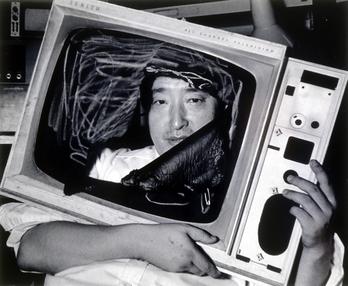
Nam June Paik was an internationally acclaimed Korean artist who pioneered video art. His work often drew influence from traditional media such as television and changed the way we look at technology today.
- Birth year: 1932
- Death year: 2006
- Nationality: South Korean/American
- Notable characteristics/subject matter: Video art, installations
- Notable artworks: Electronic Superhighway, TV Buddha
Paik’s works often featured aspects of popular culture, such as television and pop music. He was known for using electronic gadgets like televisions in his artwork to create humorous and thought-provoking pieces. His most famous work is “Electronic Superhighway,” a large-scale interactive installation with a canvas made up of hundreds of small televisions arranged in an abstract pattern.
He was also able to use technology in a way that many other artists at the time could not, such as building his own custom video-synthesizers and creating intricate art pieces out of discarded television sets. Paik’s impact has been widespread and he is now considered one of the most influential figures in modern multimedia art.
5. Lee Ufan
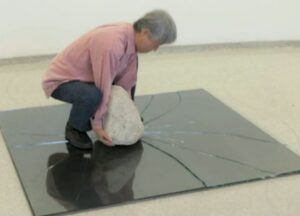
Lee Ufan is a South Korean artist renowned for his work in abstract painting and sculpture. He was one of the most influential figures in the Korean Monochrome movement, which sought to explore concepts such as emptiness and simplicity through art.
- Birth year: 1936
- Nationality: South Korean/Japanese
- Notable characteristics/subject matter: Abstract painting, sculpture
- Notable artworks: Relatum-related works, From Line series
Lee’s use of abstract expressionism was heavily influenced by traditional Korean philosophy and aesthetics. He often used simple lines to create a sense of emptiness in his work which he described as “a muted resonance”. His work has become iconic for its exploration of minimalism and simplicity
Lee Ufan is a Korean painter and sculptor who is best known for his minimalist Zen paintings that fuse Western modernism with traditional Korean aesthetics. Lee was a pioneer in the Monochrome movement and his work has been exhibited in some of the world’s most prestigious galleries including the Tate Modern in London. He is widely considered to be one of the most influential Korean artists of all time.
6. Jeong Seon
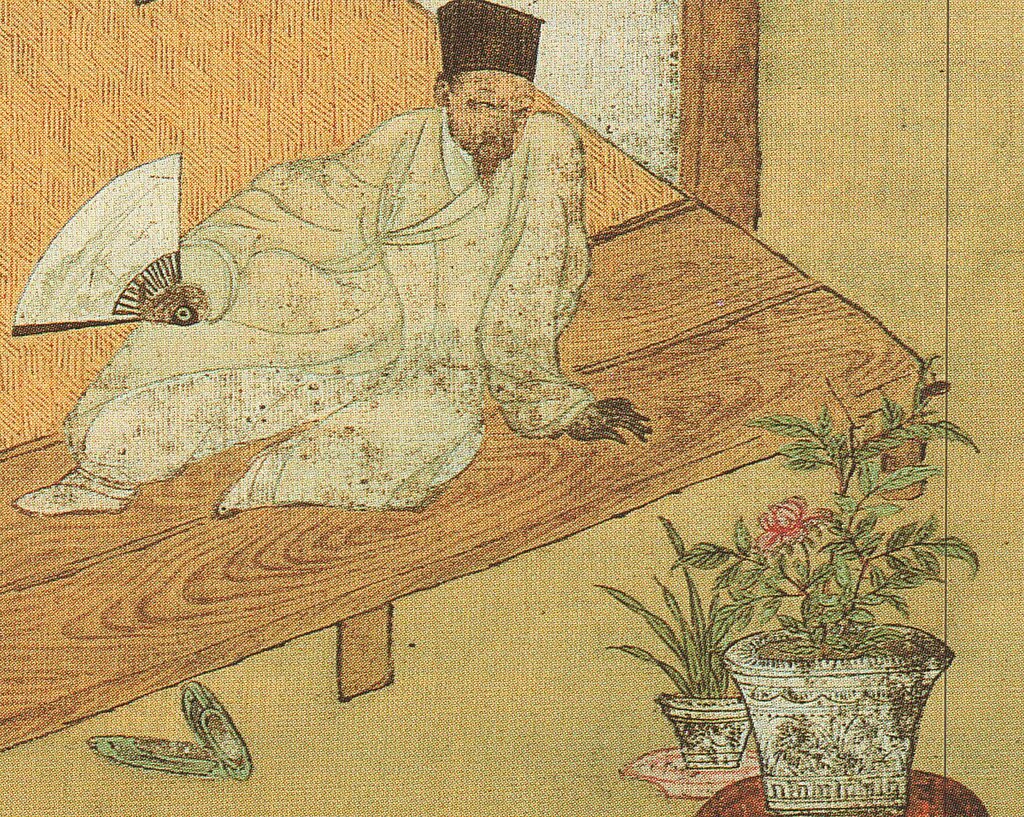
Jeong Seon was a Korean landscape painter who was one of the most important figures in the early Joseon period. His work is characterized by strong brushwork and bold colors that capture the beauty of nature’s grandeur.
- Birth year: 1676
- Death year: 1759
- Nationality: South Korean
- Notable characteristics/subject matter: Landscapes, nature
- Notable artworks: Muryangsujeon, Yeongsanhoesang
Jeong’s work captures the sublime beauty of nature in its purest form. He often used bold brushwork to convey movement and energy while his unique use of color imparts a sense of tranquility and peace. His paintings often featured scenes of nature such as rivers, mountains and forests that were inspired by his travels throughout the Korean countryside.
Jeong Seon’s work is widely regarded as a cornerstone in South Korean art history and has had a lasting influence on modern Korean landscape paintings. He was able to capture the beauty of Korea’s landscapes through his unique style of painting which is still admired by both art historians and contemporary artists alike.
7. Whanki Kim
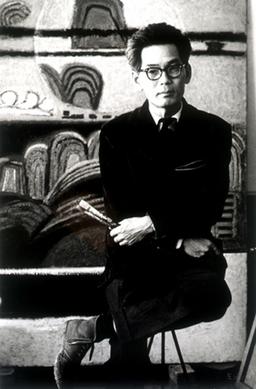
Whanki Kim was a Korean abstract painter who was known for his reductive compositions and innovative use of color.
- Birth year: 1913
- Death year: 1974
- Nationality: South Korean
- Notable characteristics/subject matter: Abstract painting, minimalist composition
- Notable artworks: Poetry, Flight on the Wind of the Sky, Rose of Sharon
Kim’s works often featured bold geometric shapes and subtle color gradations that evoke a sense of calm. His paintings were also known for their reductive compositions which he achieved through his signature use of thin layers of paint and minimalist compositions. He was able to create captivating abstract landscapes with just simple strokes and vibrant colors.
Whanki Kim’s influence on Korean abstract art is undeniable, with his works often being described as exquisite and poetic. His work challenged traditional conventions of painting and continues to inspire contemporary painters today.
8. Seund Ja Rhee
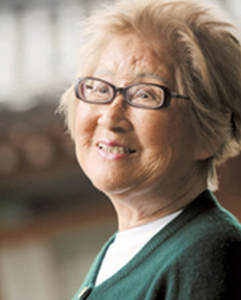
Seund Ja Rhee was a Korean abstract painter who is known for her surrealistic depictions of nature and the female form.
- Birth year: 1918
- Death year: 2009
- Nationality: South Korean/American
- Notable characteristics/subject matter: Surrealism, narratives featuring women
- Notable artworks: Ecstatic Moment, Night Summons
Rhee’s works often featured dreamlike imagery that explored themes of identity and femininity. Her paintings combined bold colors with a unique abstract style to create surrealistic scenes of nature, often featuring female figures in the foreground. She was also known for her use of detailed patterns and organic shapes which helped to bring her envisioned landscapes to life.
9. O Yoon
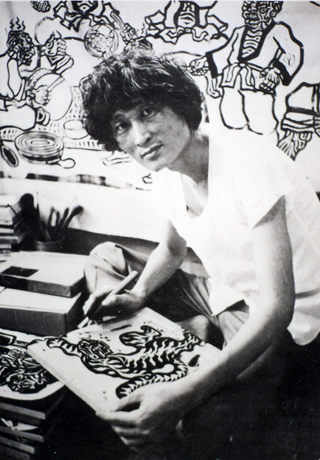
O Yoon was a prominent painter from the late 19th century, known for his use of vibrant colors and traditional Korean subjects in his artwork.
- Birth year: 1946
- Death year: 1986
- Nationality: South Korean
- Notable characteristics/subject matter: Landscapes, nature
- Notable artworks: Autumn in the Garden, Mountain Village at Nightfall
O Yoon’s work is characterized by their vibrant colors and traditional Korean themes. He often painted scenes of nature such as mountains, rivers and forests which evoke a sense of nostalgia in viewers. He was able to capture the subtle nuances of the natural world through his unique use of color and texture, making him one of the most influential South Korean painters.
10. Yi Jeong
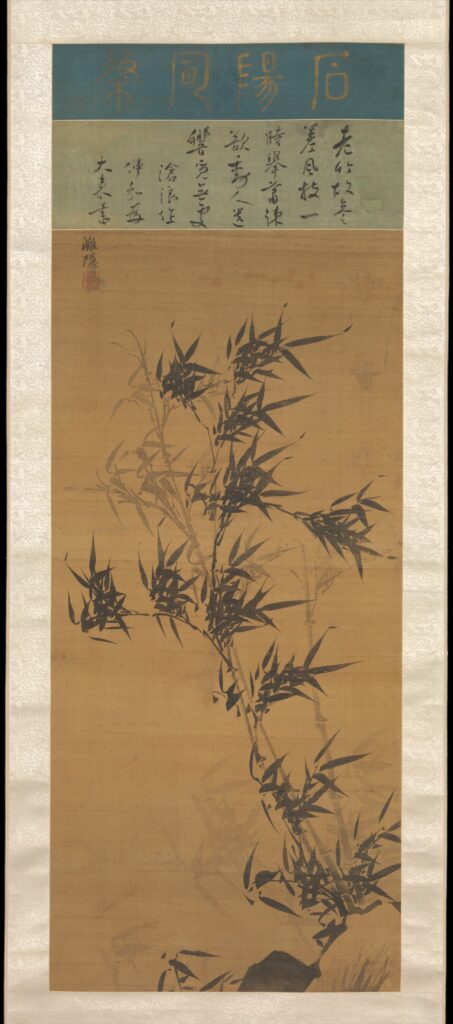
http://www.metmuseum.org/Collections/search-the-collections/50486
Yi Jeong was a prominent artist during the Joseon era known for his mastery of calligraphy and landscape painting, often incorporating Chinese styles and techniques.
- Birth year: 1536
- Death year: 1584
- Nationality: South Korean/Chinese
- Notable characteristics/subject matter: Landscapes, nature, calligraphy
- Notable artworks: Summer Mountain Village, Autumn River Valley
Yi Jeong’s landscape paintings often featured a unique combination of Chinese painting techniques with his own style of calligraphy. His work is characterized by its bold brush strokes and vibrant colors, which capture the beauty of nature in all its grandeur. He was known for his mastery of composition and perspective, making him one of the most influential Korean painters.
11. Na Hyeseok
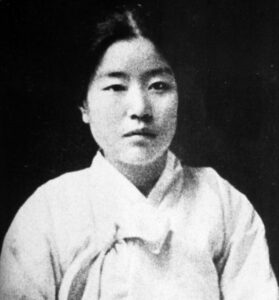
Na Hyeseok was a renowned Korean poet, writer, and painter who played a crucial role in promoting Korean literature during the Japanese colonial era.
- Birth year: 1897
- Death year: 1948
- Nationality: South Korean
- Notable characteristics/subject matter: Nature, landscapes, traditional Korean culture
- Notable artworks: Spring in the Garden, On the Cliff of Meditation
Na Hyeseok’s paintings often featured scenes of nature and traditional Korean motifs. He was able to capture the subtle beauty of nature through his intricate brushwork and vibrant colors. His works often featured a unique combination of traditional Korean elements and Western-influenced techniques, making them highly sought after by art collectors.
Na’s influence on modern Korean art is undeniable, with many contemporary painters taking inspiration from his works. His legacy continues to live on through his timeless paintings and poetic writings.
12. Jiha Moon
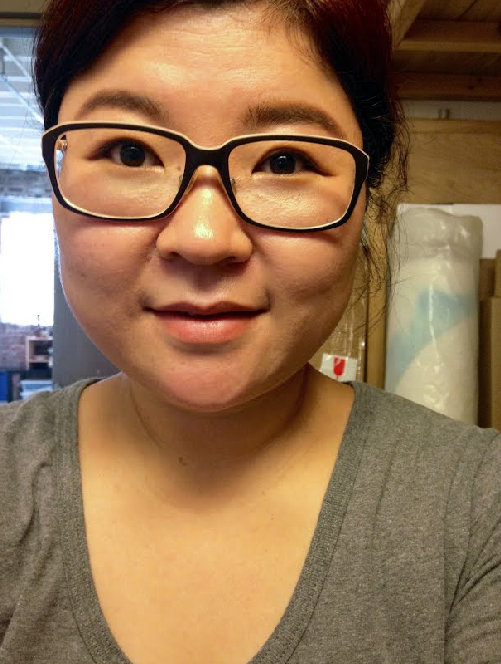
Jiha Moon, a contemporary Korean-American artist, combines traditional Korean folk art with Western pop culture to create vibrant and surreal mixed media artworks.
- Birth year: 1973
- Nationality: South Korean/American
- Notable characteristics/subject matter: Mixed media, surrealism, traditional Korean folk art
- Notable artworks: What’s Your Name?, I Dreamed of a Foreign Land
Jiha Moon’s work often features bold colors and whimsical imagery. She is known for her use of a variety of mediums such as paint, paper, and fabric to create dynamic compositions that reflect both traditional Korean folk art and Western pop culture. Her artworks often explore themes of identity, gender, and cultural hybridity in an effort to bridge the gap between East and West.
13. Park Rehyun
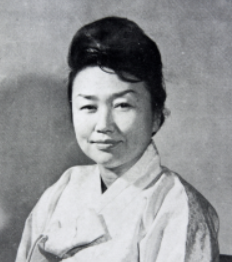
Park Rehyun was a contemporary Korean painter known for her use of bright colors and abstract forms in her artwork.
- Birth year: 1920
- Death year: 1976
- Nationality: South Korean
- Notable characteristics/subject matter: Abstract painting, landscapes, nature
- Notable artworks: Beyond the Trees of Time, Dreaming in Orange and Blue
Park Rehyun’s works often feature bright colors and abstract forms that evoke a sense of joy and energy. Her paintings often featured vibrant landscapes and dreamlike scenes that explored themes of nature and beauty. She was able to create mesmerizing compositions with her signature use of vivid colors and simple brushstrokes which made her one of the most influential Korean painters.
14. Tschoon Su Kim
Tschoon Su Kim is a pioneering Korean abstractionist, known for his fusion of Eastern tradition and Western modernism.
- Birth year: 1957
- Nationality: South Korean
- Notable characteristics/subject matter: Abstract painting, geometrical forms, Eastern aesthetics
- Notable artworks: Nexus of Infinity, Harmony in Blue and White
Tschoon Su Kim’s abstract paintings are characterized by their combination of Eastern and Western aesthetics. He often used geometric forms and patterns to create works that explored the relationships between traditional East Asian art, modern abstract painting, and Eastern philosophy. His work was highly influential in paving the way for contemporary Korean abstractionist artists who embraced both Eastern and Western elements in their works.
15. Lee Ungno
Lee Ungno was a prominent Korean painter and sculptor known for his vivid use of colors and dynamic compositions.
- Birth year: 1937
- Death year: 1975
- Nationality: South Korean
- Notable characteristics/subject matter: Colorful abstract paintings, landscapes, nature
- Notable artworks: Windy Day at the Riverside, Spring Stream of Dreams
Lee Ungno’s works often featured bright colors and vivid abstract forms. He was able to capture the beauty of nature through his unique use of color and texture, making his paintings highly expressive and captivating. His work continues to influence modern Korean artists who are inspired by his bold use of color and unconventional compositions.
16. Seok Cheoljoo
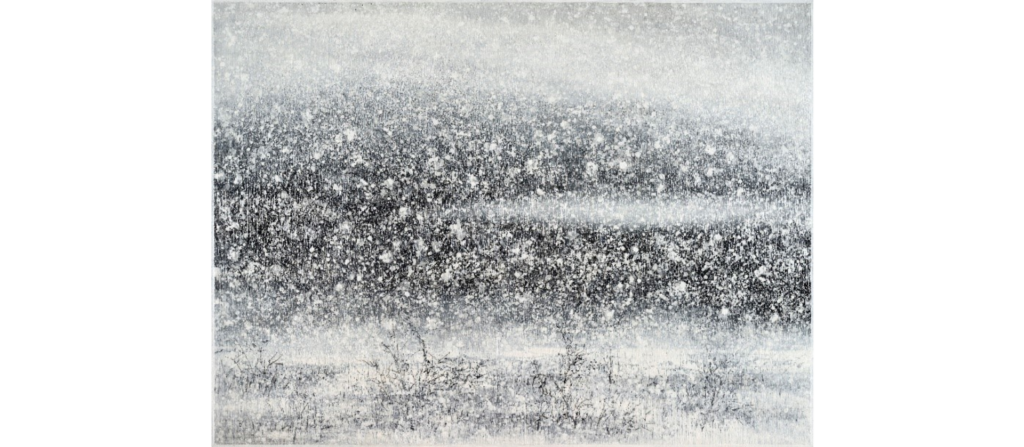
Seok Cheoljoo is a contemporary Korean artist known for his mixed media works that use unconventional materials like resin, cement, and charcoal.
- Birth year: 1950
- Nationality: South Korean
- Notable characteristics/subject matter: mixed media, unconventional materials
- Notable artworks: Fire at the Cemetery, Shadow of Rain
Seok Cheoljoo’s works often feature unusual materials such as resin, cement, and charcoal. He is known for his ability to combine traditional Korean painting techniques with modern materials to create unique works of art. His artworks explore themes of transformation and memory, often featuring dreamlike scenes that evoke a sense of nostalgia.
17. Suh Yongsun
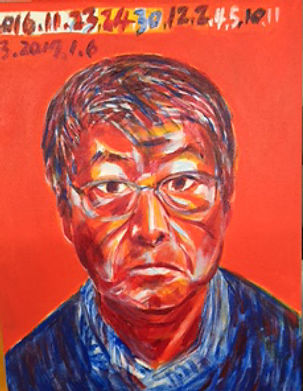
Suh Yongsun was a South Korean painter known for his abstract expressionist style and use of vibrant colors in his artworks.
- Birth year: 1951
- Nationality: South Korean
- Notable characteristics/subject matter: Abstract expressionism, landscapes, nature
- Notable artworks: Road to Heaven, Flowers of Spring
Suh Yongsun was an accomplished painter who specialized in abstract expressionist style. He often used vivid colors and bold brushstrokes to create works that featured dynamic compositions and dreamlike landscapes. His artworks in the national museum explored themes of nature and beauty, making them highly sought after by art collectors.
18. Dong-shin Bae
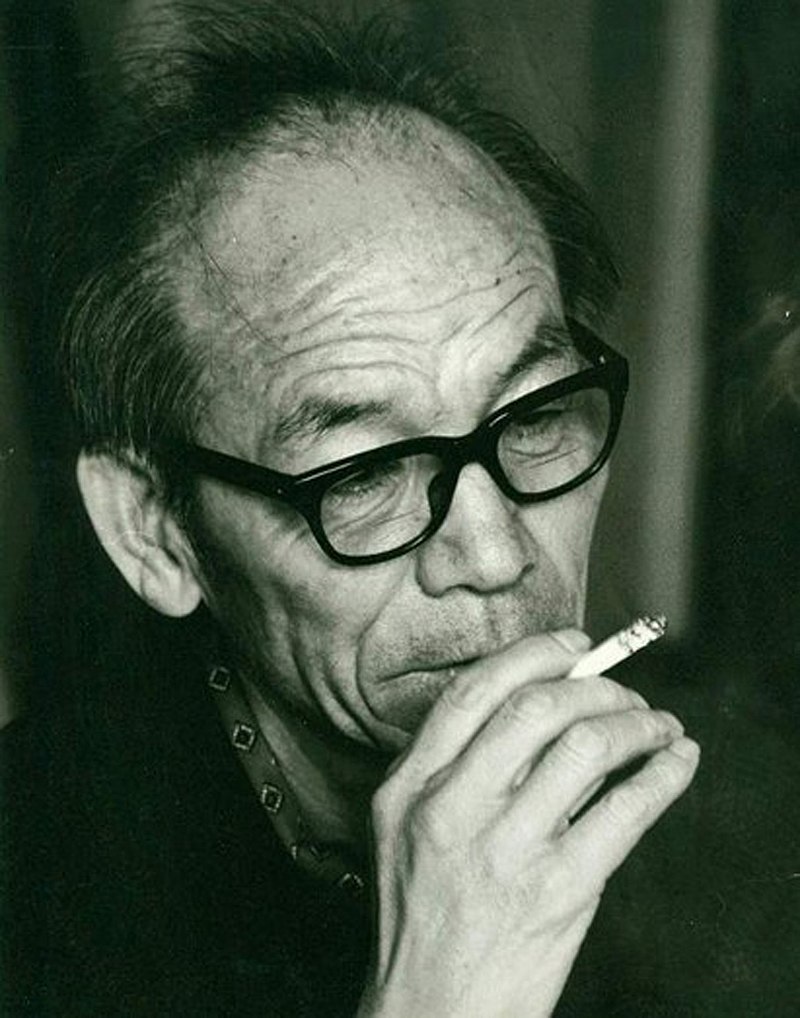
Dong-shin Bae was a Korean abstract painter known for his bold colors and expressive brushwork in traditional Korean art.
- Birth year: 1934
- Death year: 2019
- Nationality: South Korean
- Notable characteristics/subject matter: Abstract painting, landscapes, nature
- Notable artworks: Paradise in the Sky, Blue Landscape
Dong-shin Bae was a Korean abstract painter who often used bold colors and expressive brushstrokes to create captivating works of art. His artworks often featured vivid landscapes and dreamlike scenes that explored themes of nature and beauty.
He was able to capture the essence of traditional Korean painting while still creating contemporary artworks with his signature use of color and texture. His work has been highly praised for its unique blend of old and new, making him one of the most influential Korean painters.
